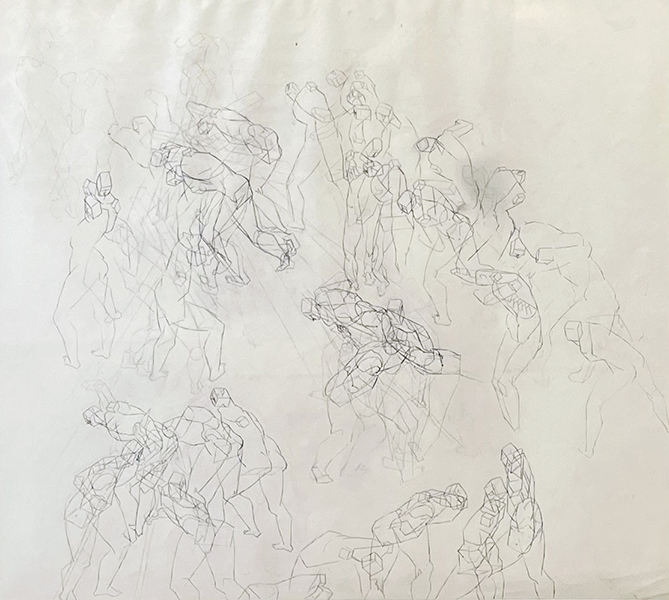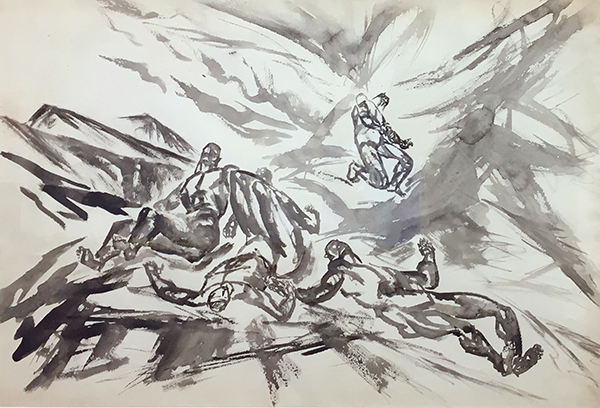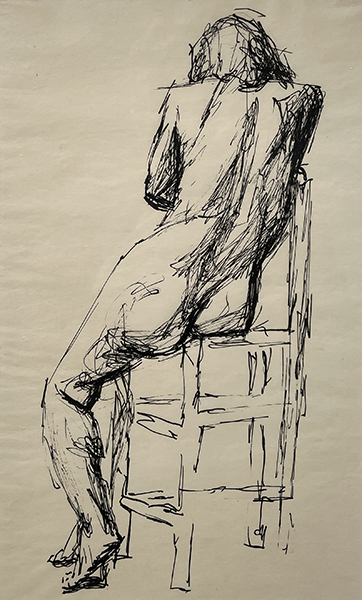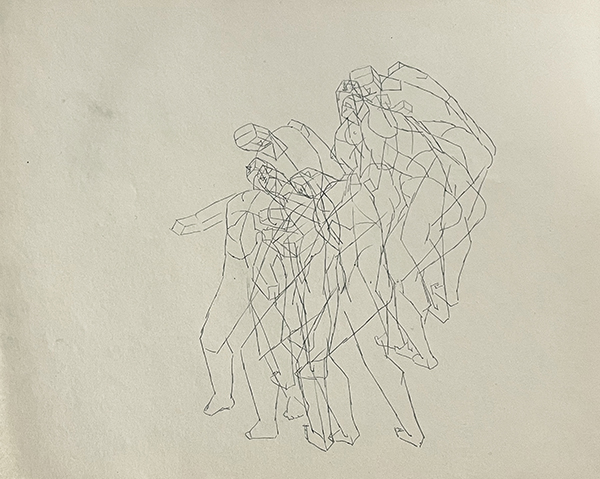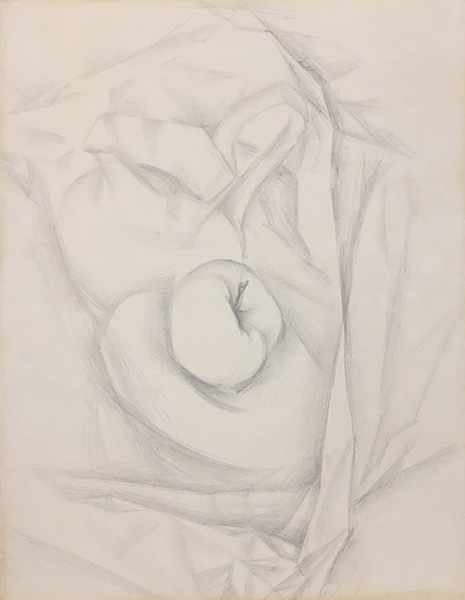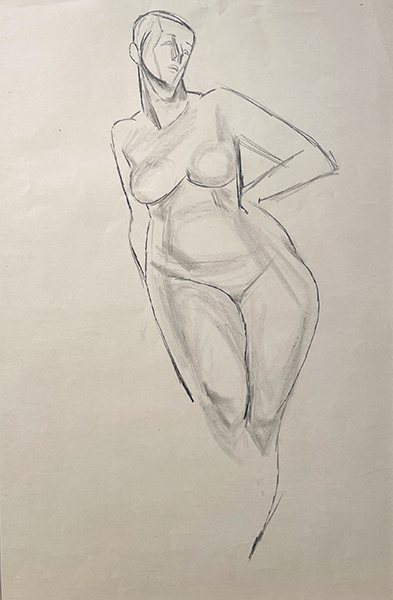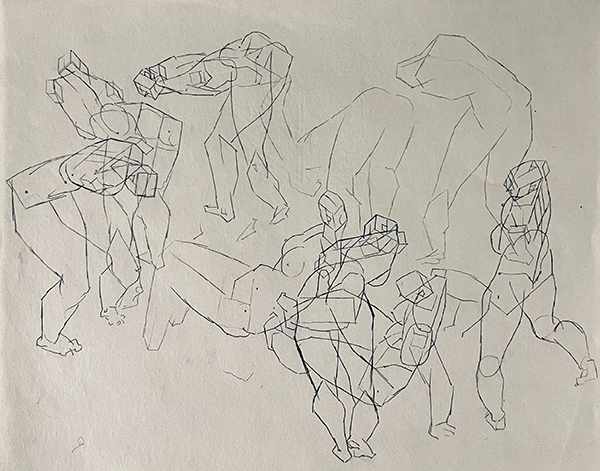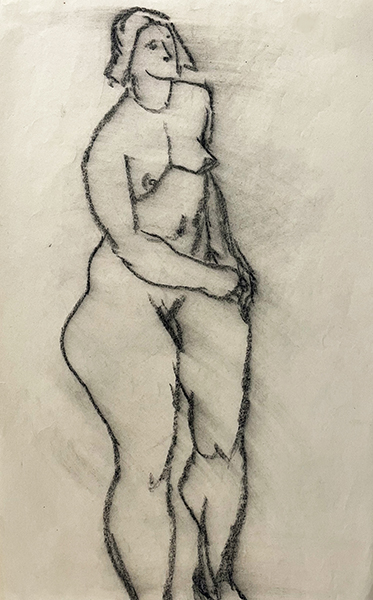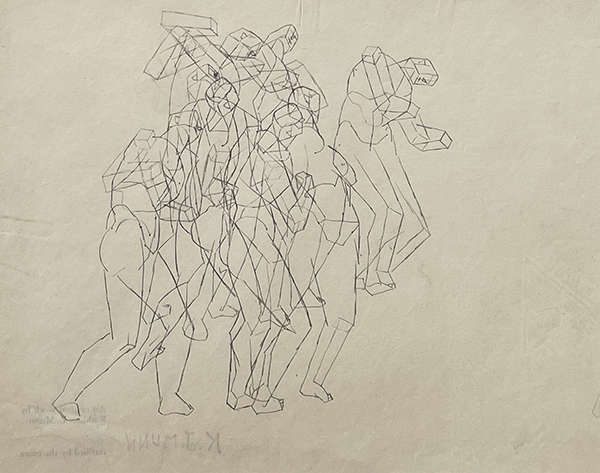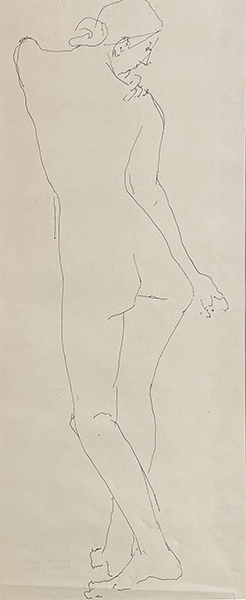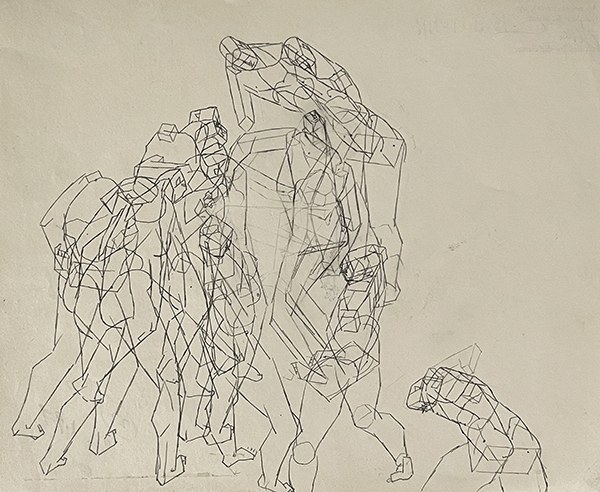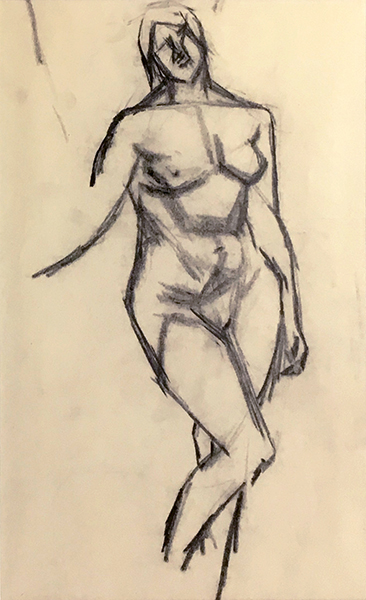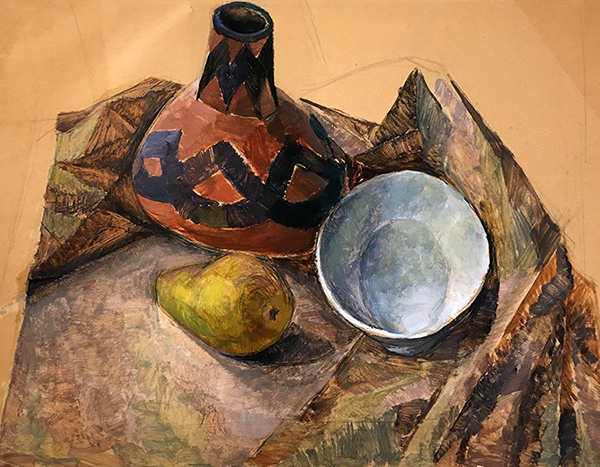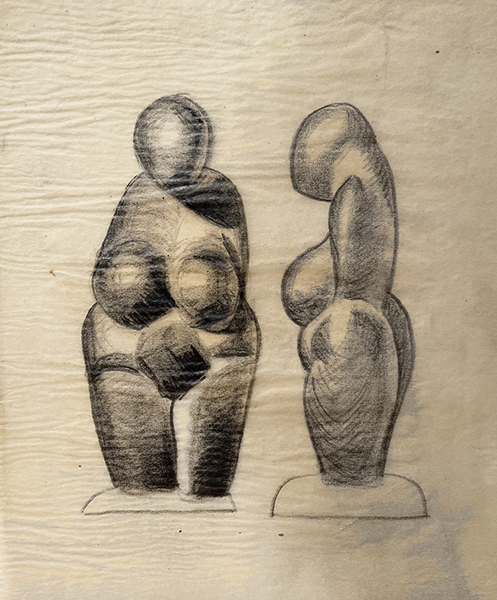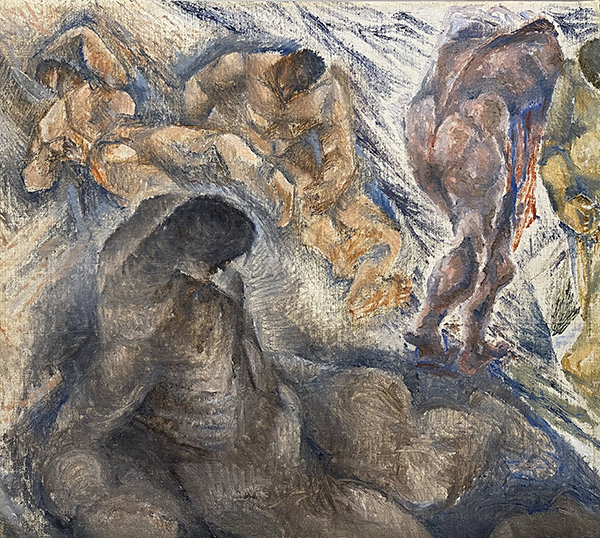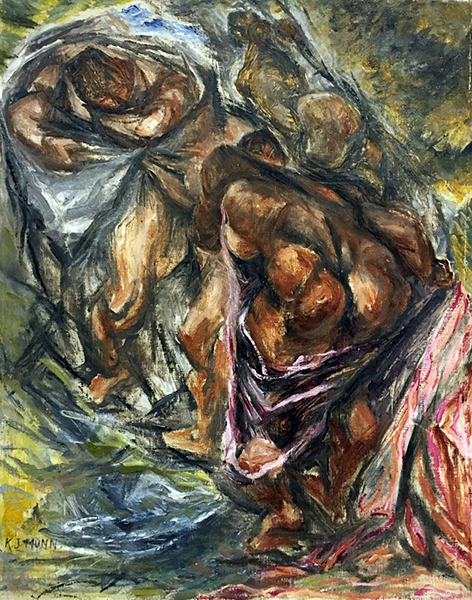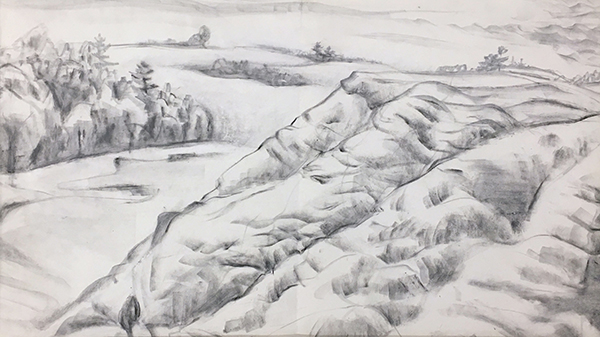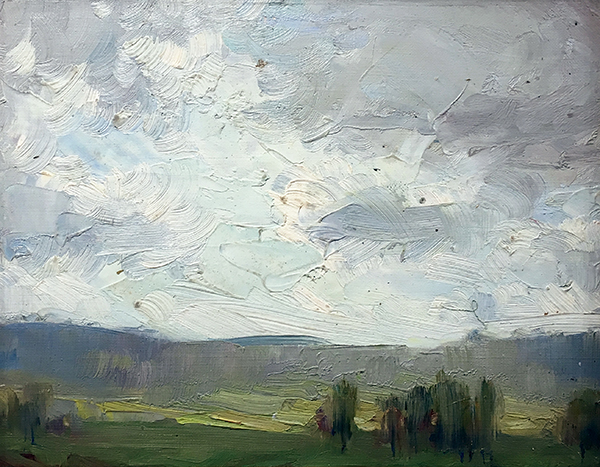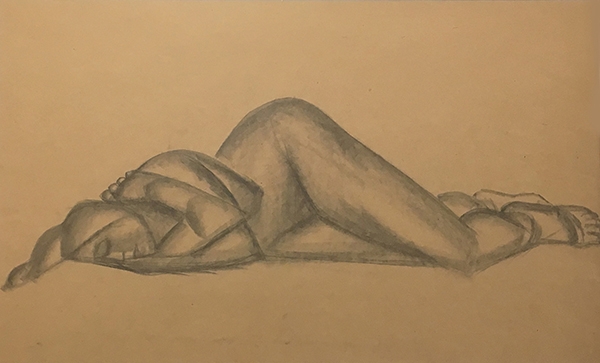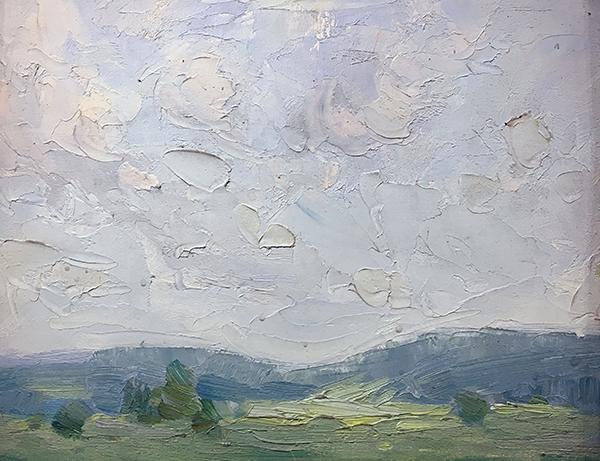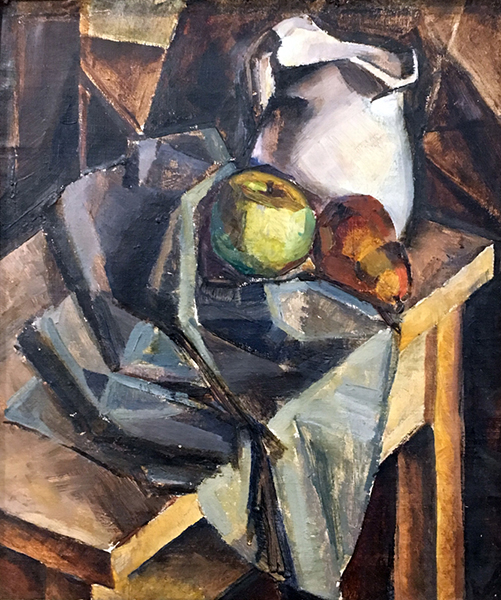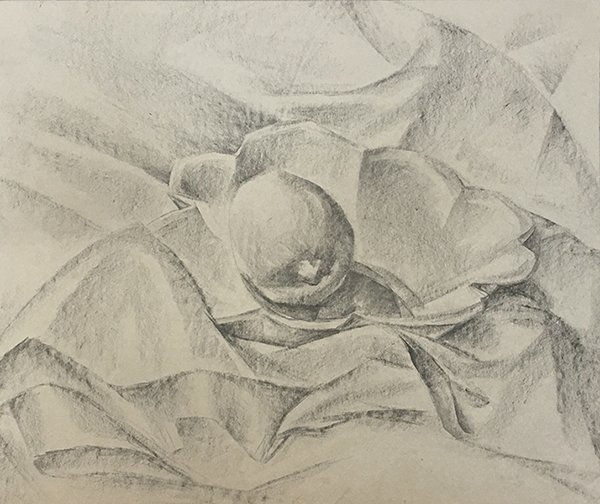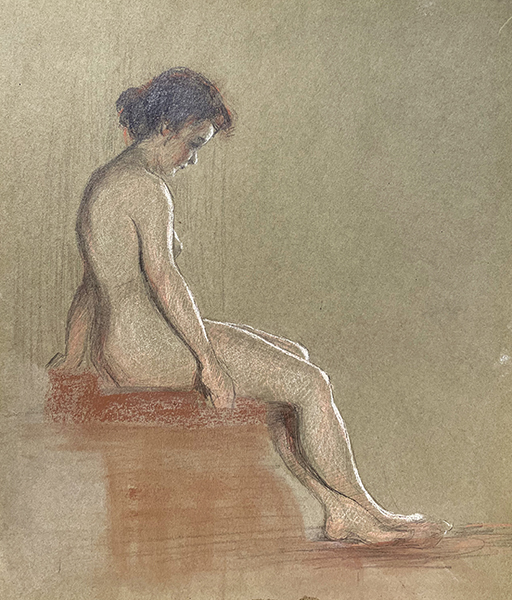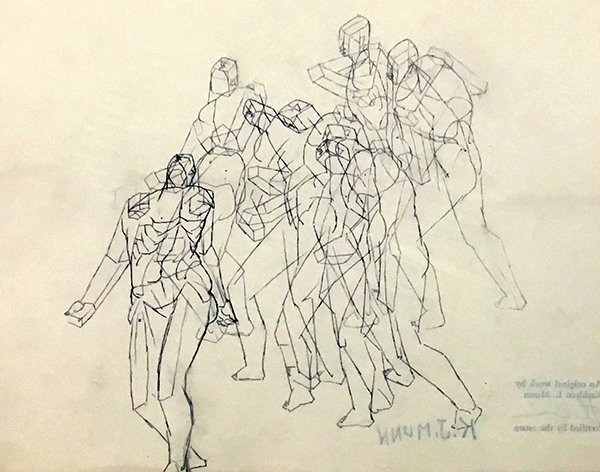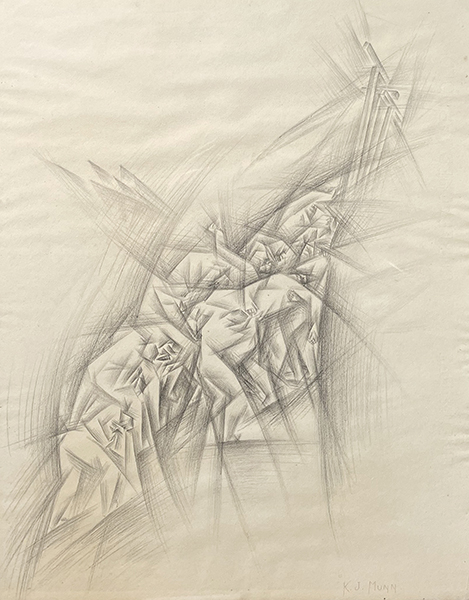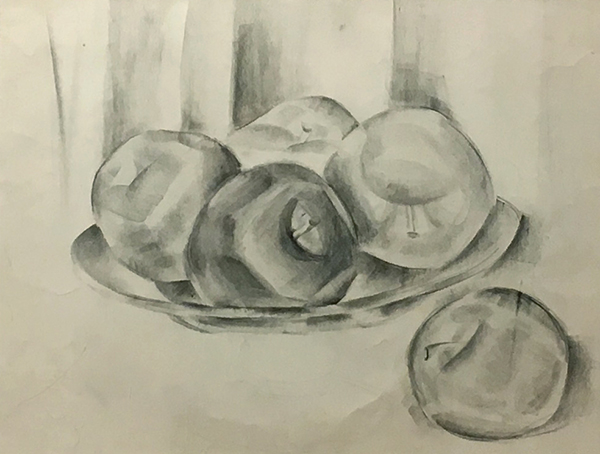Kathleen Munn
(1887-1974) – Artist Biography
Kathleen Munn is recognized today as a pioneer of modern art in Canada, though she remained on the periphery of the Canadian art scene during her lifetime. She imagined conventional subjects in a radically new visual vocabulary as she combined the traditions of European art with modern art studies in New York. She died at age eighty-seven, unaware that her long-held hope for “a possible future for my work” was about to become reality.
Details of Munn’s personal life are limited. There are no known private letters or journals, and those who knew her best have since passed away. She had a close circle of friends in the arts community, including Bertram Brooker (1888–1955), but never married and had no children. Munn’s nephews and nieces remember her as devoted primarily to her art—a preoccupation she did not easily share and one not understood by most of them. They supported her nonetheless, and in return Munn was deeply attached to them. Her niece Kathleen (Kay) Richards took over the estate to safeguard Munn’s artistic output.
Munn’s art spans three decades in the early twentieth century and plays an important role in the development of modern art in Canada. Her subject matter was established early and did not change: landscapes, figure studies, biblical themes, and still lifes.
Although Munn did not date or title her works unless they were included in an exhibition, her output can be divided into two categories. The first, from the period 1909–29, includes paintings that reflect her exploration of artistic movements such as Post-Impressionism and Cubism; the second, 1929–39, highlights her rigorous experimentation with dynamic symmetry, culminating in her most innovative series of drawings, the Passion series.
Munn’s formal art training began when she attended Westbourne School in Toronto from 1904 to 1907 and studied with Farquhar McGillivray Knowles (1859–1932), a successful local landscape painter. Encouraged and talented, Munn began to show her work in 1909 in exhibitions with the Ontario Society of Artists and the Royal Canadian Academy of Arts and at the Canadian National Exhibition, receiving some attention in reviews. She continued to exhibit with these societies until the late 1920s.
In 1912 Munn began studies at the Art Students League (ASL) in New York—the renowned modern art school established in 1875 by artists for artists. There, through her teachers, she placed herself in the heart of the American avant-garde art movement and experimented with techniques and styles, such as Post-Impressionism, Cubism, and Synchromism—a decision that distinguished her from most of her Canadian contemporaries.
Munn recorded her studies in Manhattan, as well as those at the ASL summer school in Woodstock, New York, in nine notebooks. She continued her studies at the ASL until the late 1920s. Munn considered her time in Woodstock as the most enjoyable of her life, and sometime in the 1920s she purchased property there hoping to build a studio. Unable to realize her plans, she sold it in the early 1940s.
Munn probably met Canadian artist and writer Bertram Brooker sometime in the mid-1920s. Inviting her to weekly gatherings in his home, he became Munn’s primary conduit into an important intellectual circle that included key members of the Group of Seven and collectors Ruth and Harold Tovell as well as foreign cultural luminaries visiting Toronto, such as Walter Pach and Katherine Dreier. Brooker collected two of her works: Composition (Horses), c. 1927, and Composition (Reclining Nude), c. 1926–28. Munn also participated in the informal art classes he arranged. In 1935 Brooker was central to the organization of Exhibition of Drawings by Kathleen Munn, LeMoine FitzGerald, Bertram Brooker, at the Malloney Galleries in Toronto.
In the late 1920s Munn embarked on a meticulous process of experimentation, producing over a thousand drawings and sketches on the Passion of Christ—studies for ten large final works that are considered her most significant body of work. This process was a radical refinement in her artistic vision. After a nearly twenty-year commitment to the primacy of colour and painting, she focused almost exclusively on drawing and worked with black ink and graphite. Such continual experimentation and refinement are at the core of Munn’s work. Munn drew six components of the Passion narrative: Last Supper (twice), Agony in the Garden, Christ’s Arrest, Crucifixion (twice), Descent from the Cross (twice), and Ascension (twice). She exhibited some of these along with other works on paper in 1935 at Malloney Galleries in Toronto in a group show with Bertram Brooker and Lionel LeMoine FitzGerald (1890–1956). She also displayed them on a few other occasions in the 1940s. In the spring of 1974, when curators from the National Gallery of Canada visited Munn, her walls were covered with these drawings. Indeed, these are the works Munn intended to be known for.
Biographical text is c/o: Georgiana Uhlyarik for the Art Canada Institute
Key Exhibitions:
1923-1924: 45th Annual Exhibition of the Royal Canadian Academy of Arts, Art Gallery of Toronto.
1928-1930: Exhibition of Paintings and Drawings by the Group of Seven, Art Gallery of Toronto.
1935: Exhibition of Drawings by Kathleen Munn, LeMoine FitzGerald, Bertram Brooker, Malloney Galleries, Toronto.
1946: Windsor Art Association Exhibition, Willistead Art Gallery, Windsor.
1949: Canadian National Exhibition, Toronto.
1954: Canadian Drawings, Willistead Art Gallery, Windsor
1988-1990: Kathleen Munn, Edna Taçon: New Perspectives on Modernism in Canada, Art Gallery of York University (traveling)
2008-2012: Kathleen Munn and Lowrie Warrener: The Logic of Nature, The Romance of Space, Art Gallery of Windsor (traveling)
2009-2010: The Nude in Modern Canadian Art, 1920–1950, Musée national des beaux-arts du Québec.
2011: The Passion of Kathleen Munn, Art Gallery of Ontario, Toronto
Permanent Collections:
Art Gallery of Alberta, Calgary, AB
Art Gallery of Ontario, Toronto, ON
Art Gallery of Hamilton, ON
National Gallery of Canada, Ottawa, ON
Musée d’art contemporain de Montreal, QC
Robert McLaughin Gallery, Oshawa, ON
Artist Specialization: Seeking inspiration beyond the conservative art scene in Toronto, Kathleen Munn absorbed the lessons of the international modern art movement in New York and Europe to create her signature paintings in the 1920s. In the 1930s she devised her own unique drawing technique to achieve a new visual vocabulary. Munn’s early paintings are characterized by broad brush strokes and dark tones capturing the personality and expression of the subject. Colour, above all, was central to her painting. Munn wrote in her notebook that “painting is little more than a transcription of sense impression and of accent of vision, light, dark, red, orange, yellow, green, blue, violet; up, down, right, left, straight, round, large, small and so on.” Throughout her career however, Kathleen Munn was first and foremost a dedicated student of the human figure. The 1920s was a decade of great experimentation and learning for Munn, one that led to an eloquent flourishing in a number of related pictorial styles and to her reimagining the conceptual potential of the human figure. As the art historian Anna Hudson asserts, “Munn saw the body as a complex aesthetic instrument, richest in its discordant tension of representational and abstract readings. As such, she recognized the transgressive power of the nude as a subject of modern art.”


